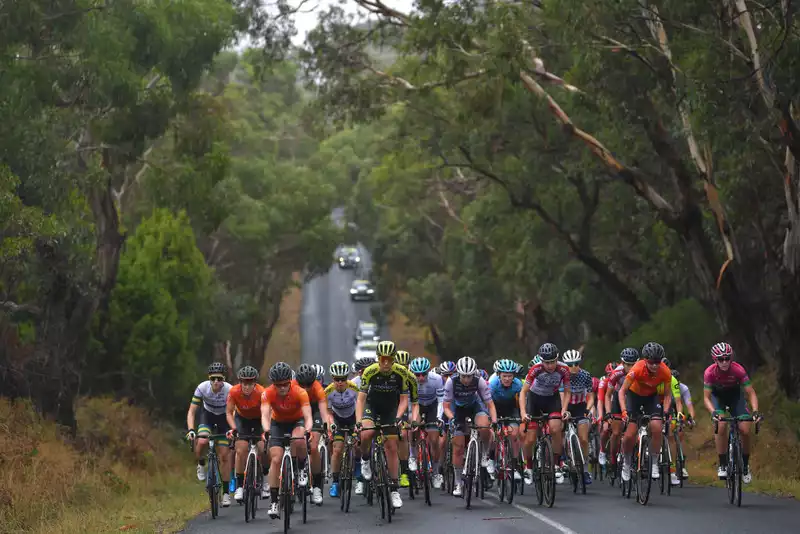The Federation of Cyclists has released its annual survey (opens in new tab), which shows a widening wage gap between the highest-paid and lowest-paid riders and an increase in the number of female professional riders with zero pay from 17% in 2019 to 25% in 2020 It was revealed that.
In addition, COVID-19 impacts rider salaries, with 29 percent of riders experiencing a reduction or complete loss of pay due to the pandemic, creating economic instability.
The Cyclist Alliance has conducted an annual survey since 2017, and the results of that first survey provided the impetus for the foundation of an independent women's union.
"Now in its fourth year, the survey gives the Cyclist Alliance a clear picture of the progress and development of women's cycling and the key areas for improvement as we continue to work toward our goals... The 2020 survey will also include several new questions about the impact of COVID-19 The 2020 survey also includes several new questions about the impact of COVID-19," the association states on its website.
This year's survey covered all cycling disciplines, not just under-23, Continental, and Women's World Tour levels, to ensure results were representative of women's professional cycling as a whole. more than 100 riders completed the survey.
The survey highlighted several areas for improvement, including more athletes seeking legal advice before signing employment contracts, which increased from 16 percent in 2019 to 23 percent in 2020. However, 77 percent of players still do not seek legal advice before signing a contract.
In addition, the number of athletes required to reimburse their teams for services essential to completing their work as professional cyclists decreased by 8 percent.
However, 43 percent of the riders surveyed reimbursed their teams for one or more of the following in 2020: equipment, mechanical services, medical expenses, and travel expenses. Additionally, 33 percent of riders have a second job while racing professionally.
In terms of salary, the top end of the Women's World Tour continues to exceed the fixed minimum annual salary of €15,000 (employed) and €24,600 (self-employed), with 25.5 percent earning over €30,000.
However, Cyclingnews noted in a recent article on transfer mechanics: "The inner workings of the women's market" feature that only a few top athletes earn up to 150,000 euros per year It states.
In January of this year, the UCI introduced a minimum annual salary as part of the Women's World Tour reforms. the top teams on the Women's World Tour, of which there are only eight, are obliged to pay their players salaries along with social and health benefits. of the 47 continental teams, the second place team are not obligated to pay their players, although some teams, such as Boels Dolmans, do.
Cyclingnews reports that there is a large gap between the budgets of the women's world team and the continental teams. The average top team may have a budget of between 1 and 3 million euros per year.
Some continental teams, such as Boels Dolmans, operate on a similar budget, but it is not representative of the budgets of most second-tier teams.
An annual survey conducted by the Federation of Cyclists reveals a widening wage gap between the highest paid and lowest paid riders, with the number of riders working without pay rising to 25%.
In addition, 32 percent of the riders surveyed earned less than 15,000 euros a year.
"We believe that further research is needed to understand why this continues to increase," the Cyclist Alliance said.
The study also found that financial investment in the broader sport has not kept pace with the development of the Women's World Tour.
The Federation of Cyclists recently released another COVID-19 survey, which revealed that many athletes find it difficult to maintain COVID-19 guidelines and protocols in top-level women's races.
The athletes identified four main concerns: protocols are not being adequately followed in some races, it is difficult to maintain cohorts in travel and lodging during races, some teams do not have direct access to a team doctor, and some forced to organize and pay for their own COVID-19 tests in order to qualify for the race.
In the most recent annual survey, COVID-19 has also had an economic impact on riders, with 29 percent of riders surveyed reporting a reduction in salary or loss of all income.
Additionally, 76 percent are concerned about the impact on their ability to secure a contract for the upcoming season, resulting in increased financial instability for the riders.
Additionally, 72 percent of the riders surveyed would consider leaving the sport for financial reasons, 56 percent would leave the sport to start a family, and 40 percent would leave to start a new career. However, 87 percent said they would extend their cycling career if they received more financial support, and 46 percent said they needed a parental policy to continue competing and start a family.
The UCI recently announced that it has signed up Alley BTC Ljubljana, Canyon Slam, FDJ Nouvelle Aquitaine Futuroscope, Green Edge Cycling, Rib Racing, Movistar Team Women, Team Sunweb, Trek Segafredo, and newly registered SD Walks (formerly Boels Dolmans), announced that nine teams have registered for next year's top teams. The sports governing body has not announced the list of continental teams for 2021.
.

Comments